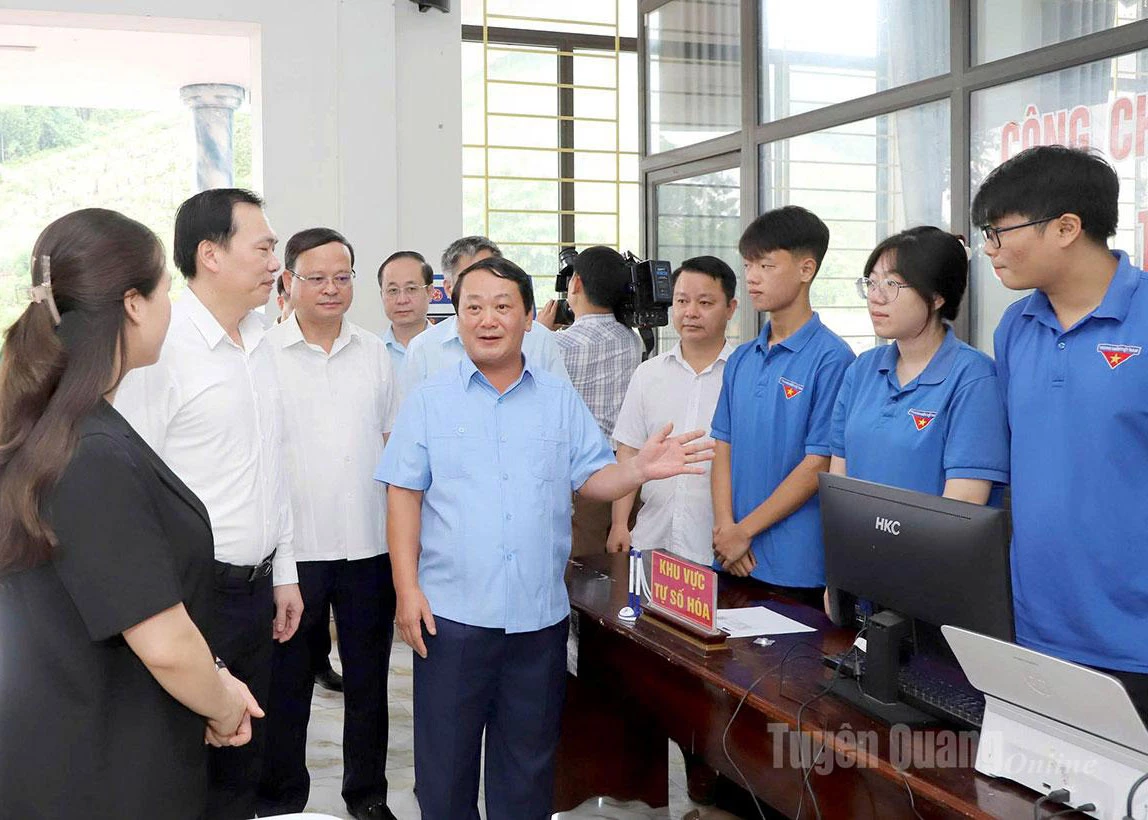One-stop administration – A gateway to public trust
On July 1, 2025, the grassroots-level Public Administration Service Centers in Tuyen Quang officially came into operation, marking a major shift in administrative reform and digital transformation at the local level. A wide range of administrative procedures have been brought directly to villages and hamlets, helping residents save time and costs while significantly improving the quality of public services.
 |
| Comrade Hau A Lenh, Secretary of the Provincial Party Committee, paid a visit to Chiem Hoa Commune to encourage youth union members supporting residents in handling administrative procedures through digital platforms. |
However, after more than two weeks of implementation, the model continues to face numerous challenges: infrastructure remains inconsistent, essential equipment is lacking, software systems are not fully integrated, and many staff members lack professional training and digital skills. Particularly in remote, mountainous, and border communes, limited public awareness and low technological accessibility pose significant obstacles, as many residents are illiterate or do not use smartphones.
In response to these challenges, Tuyen Quang province has taken swift and determined action. The Provincial People’s Committee established a 1022 hotline to assist residents with administrative procedures, while the provincial police set up 36 ID and electronic identification issuance points across local communes. Additionally, the Provincial Youth Union mobilized over 2,000 volunteers to support residents in accessing and using online public services.
Notably, the land administration sector, which has long faced numerous complications, has received focused attention. The Department of Natural Resources and Environment has established four specialized task forces to provide technical support and assist in operating the land database system. A land management handbook tailored to the two-tier local government model has also been issued, serving as a crucial professional reference for commune-level officials.
Alongside these efforts, community digital technology teams, support desks, and public-access computers have been set up at commune and ward administrative centers to better serve residents. Communication campaigns and digital literacy initiatives have also been intensified, gradually raising public awareness and improving digital competency within the community.
With strong commitment from the political system and the active involvement of various forces, the “one-stop, close-to-the-people” model is driving clear and positive changes, contributing to the development of a modern public administration that puts citizen satisfaction at its core.
Bien Luan





READER COMMENTS